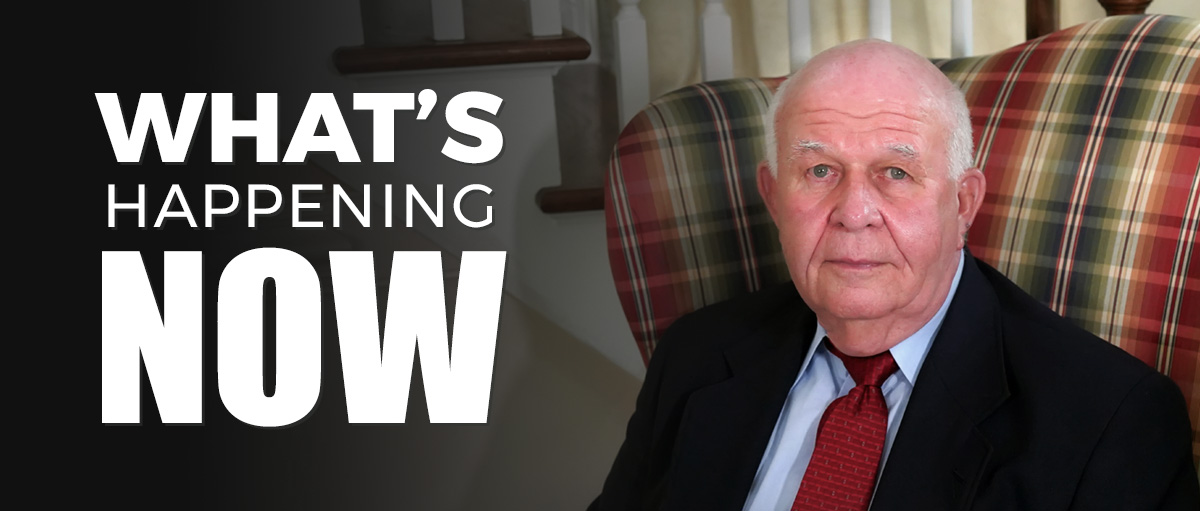Boldly Committed to Truth Telling in the False Face of Fakery
Candidates at Starting Line
Publisher's note: This article appeared on John Hood's daily column in the Carolina Journal, which, because of Author / Publisher Hood, is linked to the John Locke Foundation.
 RALEIGH Incumbent Democratic U.S. Sen. Kay Hagan has been running hard for reelection for more than a year. Republican nominee Thom Tillis, the speaker of the North Carolina House of Representatives, has been campaigning against Hagan for nearly as long. Republicans, Democrats, and independent-expenditure groups have already begun their battle over control of the state legislature.
RALEIGH Incumbent Democratic U.S. Sen. Kay Hagan has been running hard for reelection for more than a year. Republican nominee Thom Tillis, the speaker of the North Carolina House of Representatives, has been campaigning against Hagan for nearly as long. Republicans, Democrats, and independent-expenditure groups have already begun their battle over control of the state legislature.
So far, there isn't much evidence that any of these actions and expenditures have made much of an impression on the intended audience — the North Carolinians likely to vote this fall.
Until recently, nearly all of the publicly available surveys in North Carolina have produced samples of registered voters, not the subset of voters who will actually participate in the 2014 general election. The opinions of uninterested voters, or residents who aren't registered or legally authorized to vote, aren't irrelevant. If they live in North Carolina, they are subject to its laws and affected by its public policies. But if your goal is to predict who will be in charge of the U.S. Senate or state legislature after the fall election, you should focus your attention on surveys of likely voters.
Admittedly, "likely voter" is not a hard-and-fast category. Each pollster forecasts the coming electorate in different ways. Some employ a few simple questions. Others use complex models that take respondent answers and demographics into account.
So let's average the publicly available surveys of likely voters in North Carolina. I've seen such research from five pollsters so far: Magellan Strategies (the latest being June 5-8), CBS/New York Times/YouGov (July 5- 24), Rasmussen Research (August 5-6), Public Policy Polling (August 14-17), and Suffolk University/USA Today (August 16-19).
In the U.S. Senate race, the average result is 44 percent for Hagan, 44 percent for Tillis, 4 percent for Libertarian Sean Haugh (or "other" when respondents weren't told his name), and 8 percent undecided. For a closely divided state like North Carolina, the situation is entirely unsurprising. Both of the major-party candidates have secured the bulk of their base vote. Adjusted for likelihood to vote, those base votes are roughly comparable.
The Suffolk/USA Today poll of likely NC voters also contained a generic-ballot question for Congress. It gave a one-point edge to the Republicans, 46-45. The PPP poll contained a generic-ballot question for the General Assembly. It gave a one-point edge to the Democrats, 44-43.
Based on these data, you could say that the two sides have been in a marathon and are entering the homestretch neck-and-neck. Or you could say that the two sides have only been warming up and are now at the starting line. Either analogy works. Republicans counting on a gigantic, 2010-style wave to wash over the state are likely to be disappointed. Democrats counting on a gigantic backlash against the Republican legislature are also likely to be disappointed.
Whoever wins the Senate race will probably do so by a small margin. In General Assembly races, I'd be surprised if Democrats didn't gain some seats. There is a regular ebb and flow to state politics, particularly when a new set of leaders implements a new policy agenda. In modern times, all North Carolina governors have seen their party lose legislative seats in their first midterms. It happened to Jim Holshouser, Jim Hunt (twice), Jim Martin, Mike Easley, and Bev Perdue.
The average loss, believe it or not, is a combined 22 seats in both chambers (out of 170 total members). If that were to happen, you might end up with something like a 27-23 Republican edge in the Senate and a bare-minimum 61-59 Republican edge in the House. But few political pros on either side think Democrats will perform at even that average level, given their manifest electoral and organizational disadvantages. The probable outcomes are smaller but still solid GOP majorities in both chambers.
During the final 10 weeks of the 2014 election cycle, TV and radio stations will book many millions of dollars in ad sales. Your email box and social-media accounts will be full of political appeals. A young, energetic liberal or conservative activist may well show up at your front door. The final sprint has begun.
Go Back

John Hood
So far, there isn't much evidence that any of these actions and expenditures have made much of an impression on the intended audience — the North Carolinians likely to vote this fall.
Until recently, nearly all of the publicly available surveys in North Carolina have produced samples of registered voters, not the subset of voters who will actually participate in the 2014 general election. The opinions of uninterested voters, or residents who aren't registered or legally authorized to vote, aren't irrelevant. If they live in North Carolina, they are subject to its laws and affected by its public policies. But if your goal is to predict who will be in charge of the U.S. Senate or state legislature after the fall election, you should focus your attention on surveys of likely voters.
Admittedly, "likely voter" is not a hard-and-fast category. Each pollster forecasts the coming electorate in different ways. Some employ a few simple questions. Others use complex models that take respondent answers and demographics into account.
So let's average the publicly available surveys of likely voters in North Carolina. I've seen such research from five pollsters so far: Magellan Strategies (the latest being June 5-8), CBS/New York Times/YouGov (July 5- 24), Rasmussen Research (August 5-6), Public Policy Polling (August 14-17), and Suffolk University/USA Today (August 16-19).
In the U.S. Senate race, the average result is 44 percent for Hagan, 44 percent for Tillis, 4 percent for Libertarian Sean Haugh (or "other" when respondents weren't told his name), and 8 percent undecided. For a closely divided state like North Carolina, the situation is entirely unsurprising. Both of the major-party candidates have secured the bulk of their base vote. Adjusted for likelihood to vote, those base votes are roughly comparable.
The Suffolk/USA Today poll of likely NC voters also contained a generic-ballot question for Congress. It gave a one-point edge to the Republicans, 46-45. The PPP poll contained a generic-ballot question for the General Assembly. It gave a one-point edge to the Democrats, 44-43.
Based on these data, you could say that the two sides have been in a marathon and are entering the homestretch neck-and-neck. Or you could say that the two sides have only been warming up and are now at the starting line. Either analogy works. Republicans counting on a gigantic, 2010-style wave to wash over the state are likely to be disappointed. Democrats counting on a gigantic backlash against the Republican legislature are also likely to be disappointed.
Whoever wins the Senate race will probably do so by a small margin. In General Assembly races, I'd be surprised if Democrats didn't gain some seats. There is a regular ebb and flow to state politics, particularly when a new set of leaders implements a new policy agenda. In modern times, all North Carolina governors have seen their party lose legislative seats in their first midterms. It happened to Jim Holshouser, Jim Hunt (twice), Jim Martin, Mike Easley, and Bev Perdue.
The average loss, believe it or not, is a combined 22 seats in both chambers (out of 170 total members). If that were to happen, you might end up with something like a 27-23 Republican edge in the Senate and a bare-minimum 61-59 Republican edge in the House. But few political pros on either side think Democrats will perform at even that average level, given their manifest electoral and organizational disadvantages. The probable outcomes are smaller but still solid GOP majorities in both chambers.
During the final 10 weeks of the 2014 election cycle, TV and radio stations will book many millions of dollars in ad sales. Your email box and social-media accounts will be full of political appeals. A young, energetic liberal or conservative activist may well show up at your front door. The final sprint has begun.
Comment
| State Clarifies Student Voter ID Rules | Carolina Journal, Editorials, Op-Ed & Politics | Soros-Backed Group Appeals Court Ruling Upholding Election Reform |
Latest Op-Ed & Politics
|
eve 45% of Latinos support mass deportation
Published: Thursday, April 25th, 2024 @ 12:40 pm
By: John Steed
|
|
this at the time that pro-Hamas radicals are rioting around the country
Published: Thursday, April 25th, 2024 @ 8:01 am
By: John Steed
|
|
Pro death roundtable
Published: Wednesday, April 24th, 2024 @ 12:39 pm
By: Countrygirl1411
|
|
populist / nationalist anti-immigration AfD most popular party among young voters, CDU second
Published: Wednesday, April 24th, 2024 @ 11:25 am
By: John Steed
|
|
political scheme behhind raid on Mar-a-Lago
Published: Wednesday, April 24th, 2024 @ 9:16 am
By: John Steed
|
|
how many of these will come to North Carolina?
Published: Tuesday, April 23rd, 2024 @ 1:32 pm
By: John Steed
|
|
Barr had previously said he would jump off a bridge before supporting Trump
Published: Tuesday, April 23rd, 2024 @ 11:37 am
By: John Steed
|
|
Babis is leader of opposition in Czech parliament
Published: Tuesday, April 23rd, 2024 @ 10:28 am
By: John Steed
|























From what I read of the size of the samples, it is more in the range of +/-10%! To call it at 1% variance is far too "optimistic" statistically speaking!